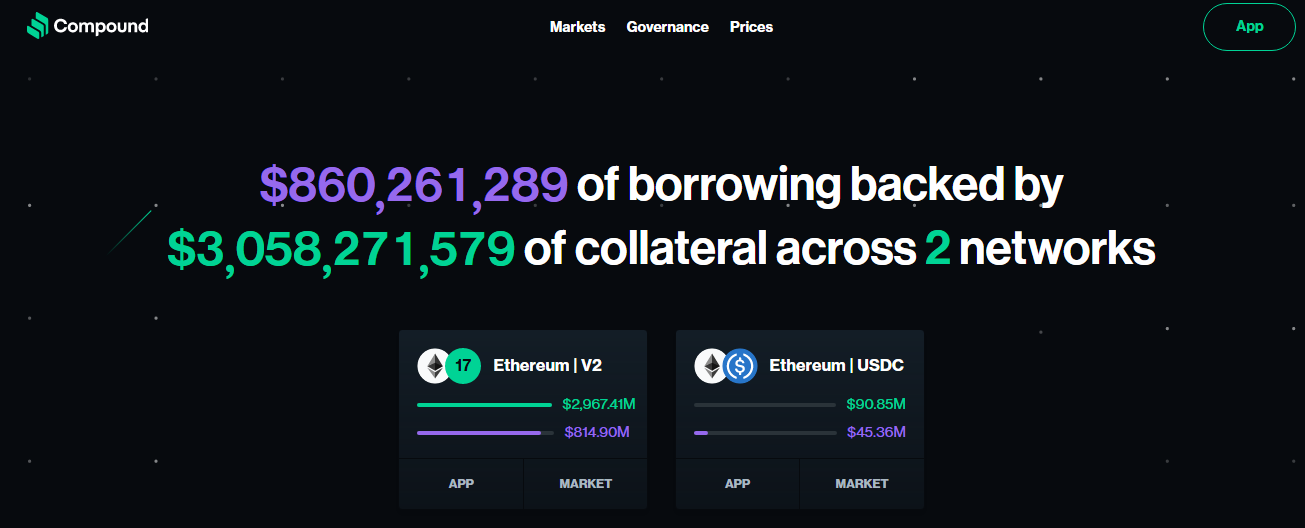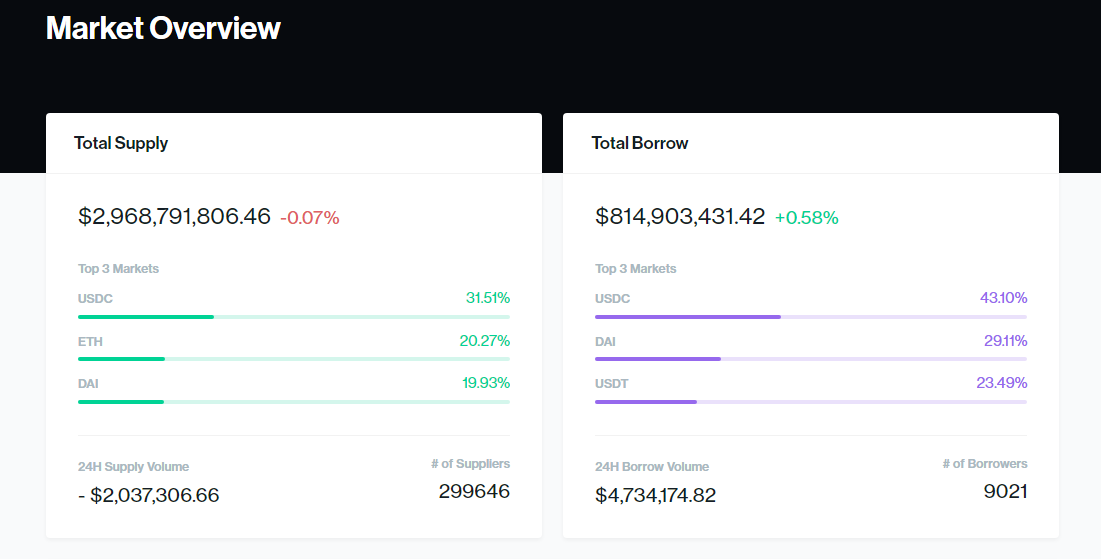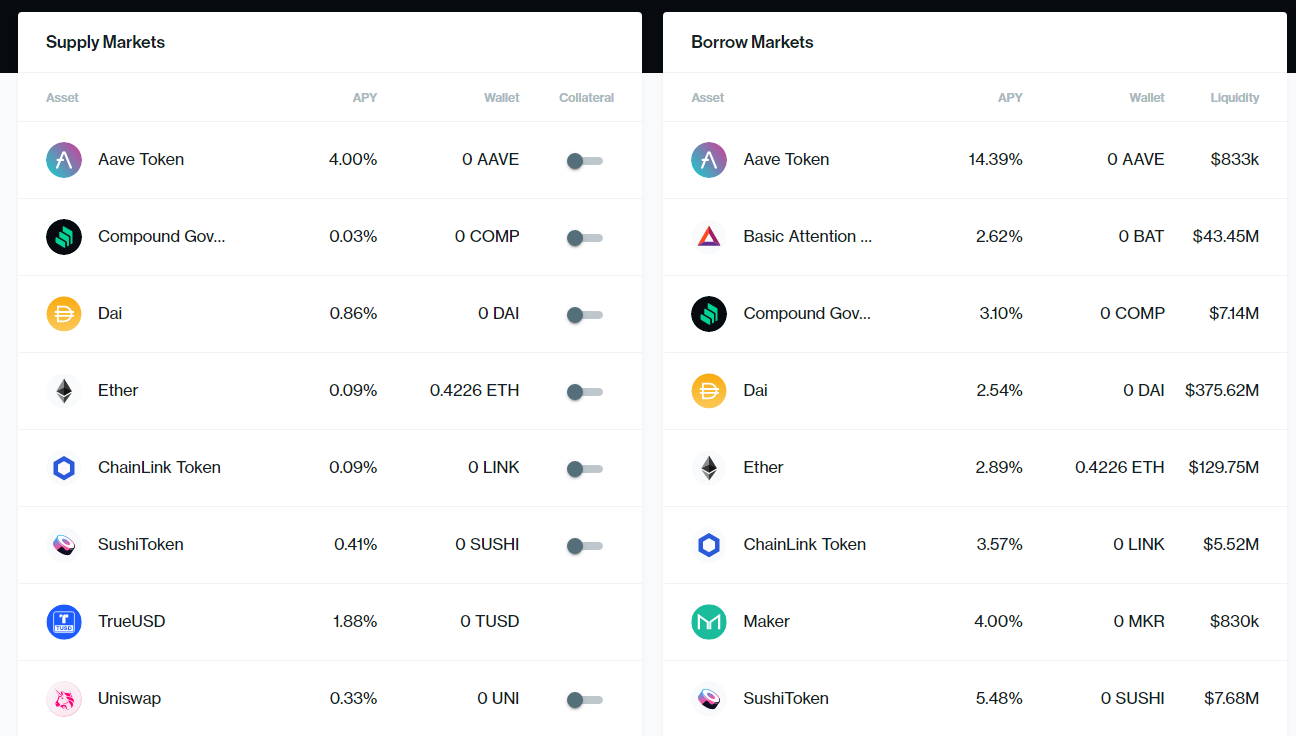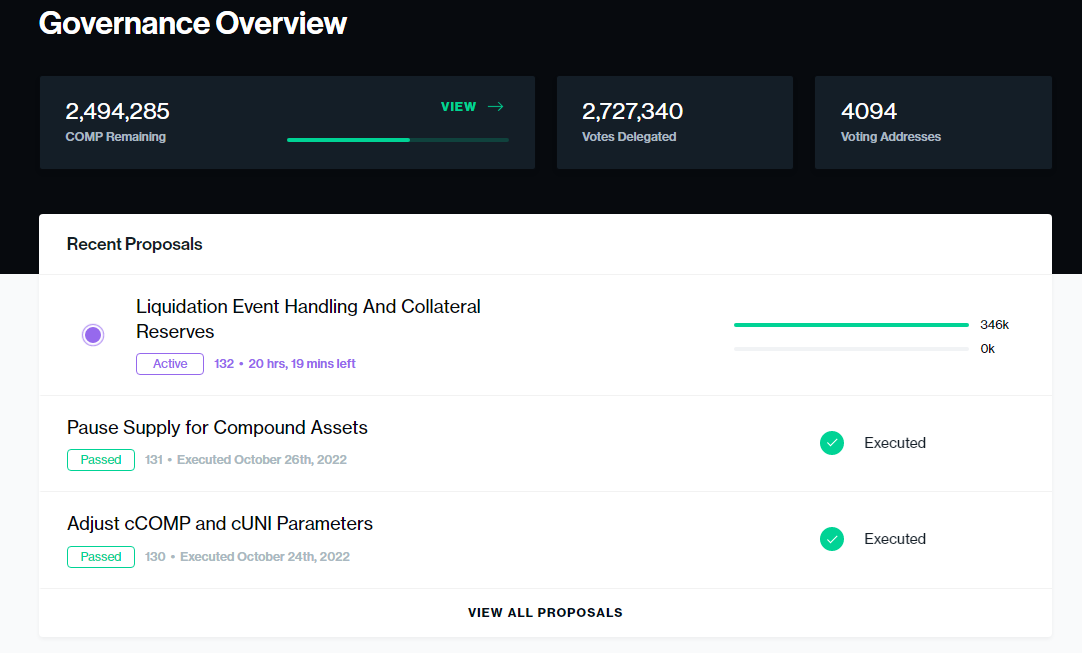Compound Finance: Deep Dive Into the DeFi Lending Platform
7
0

As it were, everything we know about finance has been radically transformed by the actualization of blockchains, cryptocurrencies, DeFi, and smart contracts. The decentralization flu spreading through the sector has brought about concepts that even dreamers would have had trouble imagining just a decade ago.
Many things impossible with traditional banking are now possible with decentralized finance. Focusing on borrowing and lending, traditional finance is characterized by collateralized loans only. With TradFi, you have to present several physical assets or liabilities as collateral to be able to access a loan. Decentralized finance, on the other hand, has eliminated third parties almost completely. Anyone with a phone, internet access, and a little bit of crypto now has access to collateralized and uncollateralized loans.
This article discusses one of the biggest players in DeFi lending and borrowing, Compound Finance.
What is Compound Finance?

Compound Finance is largely similar to a savings account. The major difference here is that the bank controls your traditional savings account with promises of ridiculous annual interest returns and all the shadiness that comes with them. Contrarily, Compound Finance is a decentralized holding account that allows you to generate interest on your crypto assets without third-party interference.
Where it gets interesting with Compound Finance is that you can lend your locked-up crypto savings. By doing so, you can get some juicy interest paid for lending. On the other hand, locking up your crypto funds in the protocol gives you access to borrow up to 80% of your total savings.
Ethereum blockchain sits as the pioneer of decentralized finance since it first introduced smart contracts and an ecosystem that facilitates the development of decentralized applications. So, it makes sense to find the Compound protocol on Ethereum. This automatically means the governance token of Compound Finance is an ERC-20 token.

Compound Finance can also facilitate trades, transfers, and utility in multiple DeFi applications. As a DeFi lending protocol, compound finance is an algorithmic money market protocol. It can be compared to an open market for cryptocurrencies. The platform allows users to deposit cryptocurrencies, earn interest, and borrow assets in exchange for their deposits. It uses smart contracts to automate the management and storage of the platform's capital.
With Compound Finance, there is no need for lenders and borrowers to haggle over the terms as they would in a more traditional context. Both parties only need to directly communicate with the Compound protocol, which manages the collateral and interest rates. Remember that Compound Finance eliminates third parties? Therefore, crypto assets are held in smart contract protocols referred to as liquidity pools, not with an intermediary.
The interest rates on Compound Finance for lenders and borrowers are algorithmically adjusted based on supply and demand. Higher demand and limited supply lead to higher interest rates, and vice versa. Last but not least, Compound is a permissionless protocol, which means that anyone, anywhere in the world, can connect to Compound and earn and pay interest with a web3 wallet.
Who Founded Compound?
Robert Leshner and Geoffrey Hayes, serial business owners, established Compound.
The renowned venture capital firms Andreessen Horowitz and Bain Capital Ventures, the venture capital division of the consulting firm Bain, contributed $8.2 million to Compound's investment round in 2018.
In 2019, Compound raised an additional $25 million from many of the same investors in addition to some new ones, notably Paradigm Capital, a fund established by a Coinbase co-founder.
How Does Compound Finance Work?

We've extensively touched on the initial question of "What is Compound Finance?" Let's further consider how Compound DeFi protocol works.
The working process of lending or borrowing crypto with Compound Finance starts with connecting your web3-enabled wallet like Metamask to the Compound protocol. By default, any crypto fund deposited is locked up in the protocol (any ERC-20 token supported by Compound). Performing any activity will require you to unlock your crypto asset for interaction. In the case of multiple ERC-20 deposits, a user selects which token he wants to interact with and then proceeds.
It is important to note that every deposit into the Compound protocol is tracked in the form of cTokens, which is Compound's native ERC-20 token. cTokens represent or are equivalent to your stake in the liquidity pool.
As an illustration, cETH is created when you put ETH into Compound. The Basic Attention Token (BAT) is transformed into cBAT upon deposit. If you deposit multiple coins, each one will accrue interest at its rate. In other words, cBAT will earn the interest rate for cBAT, and cETH will earn the interest rate for cETH.
cTokens are redeemable. That is, you can convert them back to the original token you deposited and withdraw at will. You only get the equivalent of your stake in the liquidity pool. cTokens accrue interest and increase in value when the number borrowing the underlying asset grows in the open market. Holding an ERC-20 token is all it takes to earn interest on Compound.
Lending with Compound Finance
You must lend some cryptocurrency to the Compound protocol as your first significant Compound action. This action enables you to use other functionalities of the platform, such as borrowing. Compound demands collateral before allowing you to borrow from the protocol, just like other well-known lending and borrowing services. Supplied assets will accrue interest per the protocol, but you won't be able to redeem the crypto asset while borrowing.
Compound's V2, the most popular version as of right now, offers a selection of about 20 different altcoins, among which the top five are USD Coin (USDC), DAI, Ether (ETH), Wrapped Bitcoin (WBTC), and Tether (USDT). The most frequently used pools for lending and borrowing are those based on Ether (ETH) and well-known stablecoins like DAI, USDC, and USDT.

Compound's V3 offers a limited amount of crypto assets you can supply. There are just five; Ether (ETH), Wrapped Bitcoin (WBTC), Compound (COMP), Chainlink (LINK), and Uniswap (UNI).
Lending is an easy process. To start supplying capital, unlock the asset you wish to provide liquidity for. Then, sign a transaction using your wallet. The assets are added right away to the pool and immediately begin to accrue interest. The assets are now transformed into cTokens at this point.
Borrowing with Compound Finance
You'll have an approximated borrowing capacity as soon as you've lent some money to the Compound protocol. Based on this, Compound allows you to borrow cryptocurrency up to a predetermined amount. Your available credit is calculated in USD equivalent.
In the case of multiple deposits, your overall borrowing capacity will be calculated based on all of the cryptocurrencies you have lent to the protocol.
When borrowing funds, you need to pay attention to the collateral ratio. The collateral ratio gives you the percentage of the crypto you can borrow based on your deposited crypto assets. For instance, if the collateral ratio for Ether (ETH) is 75%, you can borrow up to 75% of the entire amount you have deposited in ETH. The collateral ratio for most altcoins ranges from 60% to 85%.
This means that, similar to other DeFi lending protocols, Compound's protocol works on the principle of over-collateralization - where a borrower has to supply more crypto than the amount he borrows from the pool to avoid liquidation. The platform can continue to retain its tried-and-true stability thanks to this meticulously maintained over-collateralization.
Interest Rates on Compound Finance
The level of market liquidity has a direct impact on interest rates. The supply and demand will determine how these rates change in real-time. When there is a lot of liquidity, interest rates are low. Interest rates rise as demand increases, encouraging new production and debt payback.
Each time an Ethereum block is mined, the interest rate on Compound is accrued as annual interest. Every 15 seconds, the value of cTokens rises by a factor equal to 1/2102400 of the annual interest rate.
Compound Tokens - COMP and cTokens
cTokens
On the Compound platform, cTokens are a crucial utility tool. These tokens, which serve primarily as your proof of deposit, are given to you when you supply capital to the pool.
Instead of being applied to the initial cryptocurrency you invested, all interest earned on the money you've lent is added to your cTokens. These tokens are, therefore, artificial assets whose value increases over time.
Since cTokens are products of the Compound protocol, they have no use case outside the Compound ecosystem. Trying to use them outside the confines of Compound is like taking a fish out of water.
COMP

The primary and native cryptocurrency of Compound is COMP. The primary purpose of the COMP token, an ERC-20 standard coin, is governance. Owners of COMPs have the option to cast a vote or delegate a vote on any significant protocol updates. By market cap, the native COMP governance token is now the ninth-largest governance crypto.
COMP Token - Circulating Supply
There is a total supply limit of 10 million COMP. Less than one-third of the maximum supply is currently in use.
Over four years, users of the Compound protocol will receive 4.2 million tokens. The stockholders of Compound Labs, Inc. will get about 2.4 million COMP. The founders and current Compound team will receive another 2.2 million COMP tokens with a 4-year vesting period.
Compound Finance Pros and Cons
Pros
Different earning opportunities
Compound gives users the chance to lend various kinds of cryptocurrencies. This is an advantage because you can earn interest on all cryptocurrencies you supply to the pool. Depending on the coin or token, lenders have a wide range of liquidity pool options with varying rates of return. Lenders also receive interest on average every 15 seconds when using this platform. The interest received can compound, increasing rates of return.
On Compound's platform, yield farming is another alternative, implying a chance to profit from a high annual percentage yield. Many investors operate as borrowers and lenders to obtain the most COMP tokens when using Compound.
Tested Security
In the ecosystem of cryptocurrencies, security is essential, and Compound gives it top emphasis. Well-known auditors, including Trail of Bits and Open Zeppelin, have conducted numerous security audits on the platform and found the platform's coding to be dependable and capable of securing network demands.
Zero Trading and Slippage Fees
Another benefit of using the Compound platform is that there are no slippage or trading costs, saving consumers from paying exorbitant commissions on their trades. That is not the standard on several competing platforms, which often charge different fees for trading the cryptocurrency or carrying out other transactions.
Zero Limit On Supplying and Borrowing
Compound does not impose minimal borrowing or supplying criteria, unlike many rival platforms. This allows for greater user participation in the loan market and allows lenders to earn interest on even small token investments.
Cons
It's Not User-Friendly
Compound has a steep learning curve and is not as user-friendly as other platforms. It may be challenging to navigate for new crypto users and requires at least a basic understanding of the crypto field. This restricts usage to only seasoned cryptocurrency fans more capable of navigating that domain.
Limited Tokens
Additionally, built on Ethereum, the Compound platform has a limited selection of tokens. There are fewer than 10 tokens on the Compound platform, which is far lower than many of the platforms competing with it. The platform is only available to individuals interested in those alternatives due to the tokens' shared Ethereum blockchain foundation.
Conclusion
Compound Finance is one of the biggest DeFi lending protocols on Ethereum. It is a great fit for anyone looking to earn interest from their crypto assets through lending and borrowing. Users can collateralize their crypto assets to borrow up to 85% of their locked funds.
The gradual elimination of third parties from the finance sector opens up possibilities that create financial inclusion for the unbanked in ways made only possible by the Internet. Decentralized Finance has created an ecosystem of decentralized financial services, and projects like Compound protocol help us participate and profit from that ecosystem.
Learn more about cryptos, stay updated with the markets, and seamlessly manage your crypto portfolio on CoinStats today.
7
0









